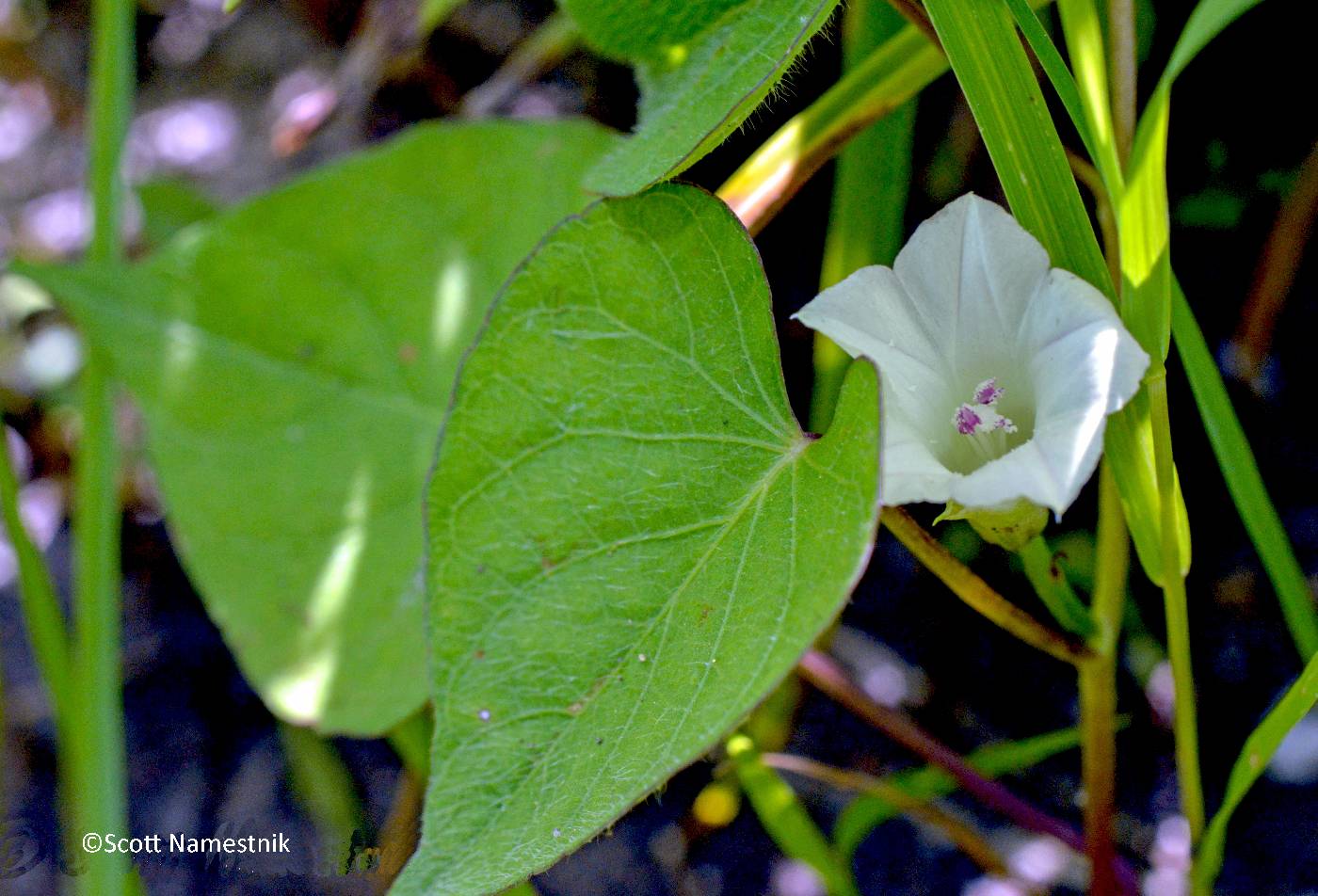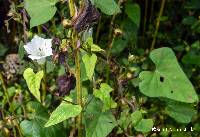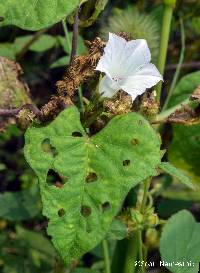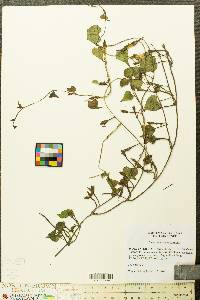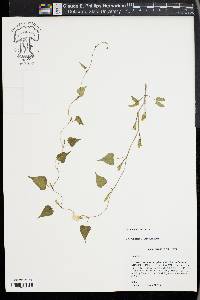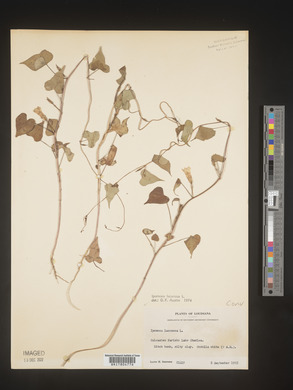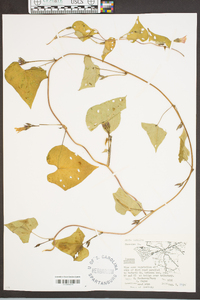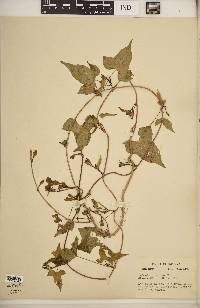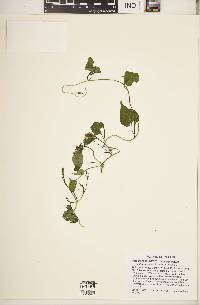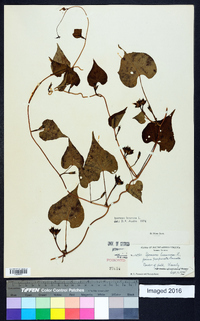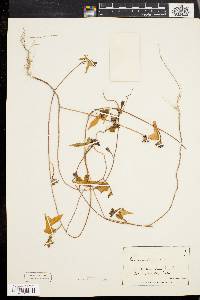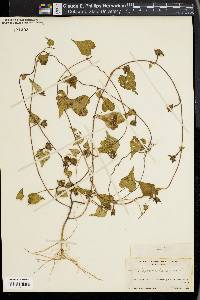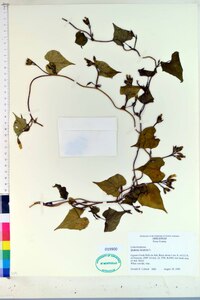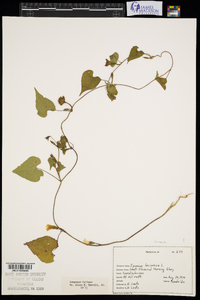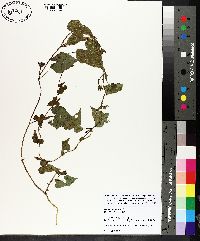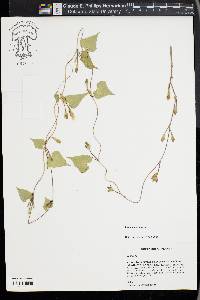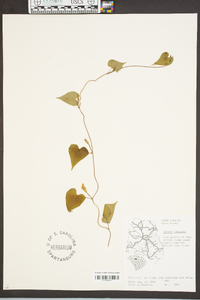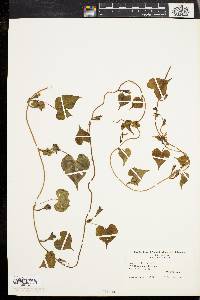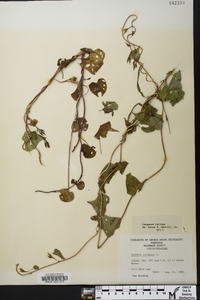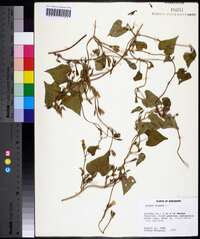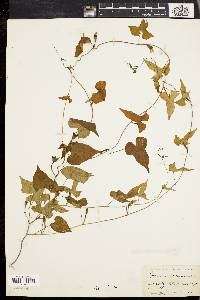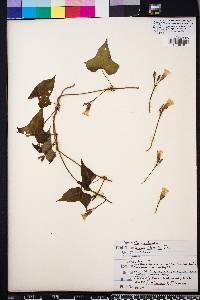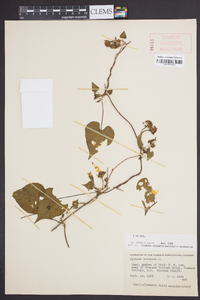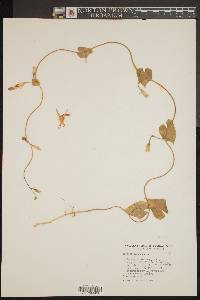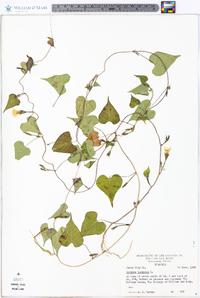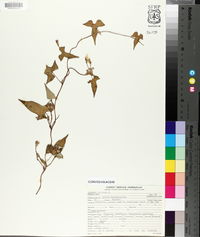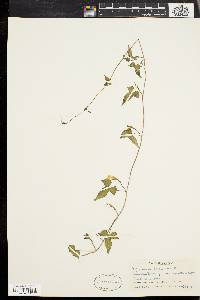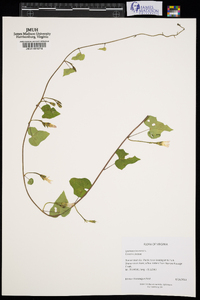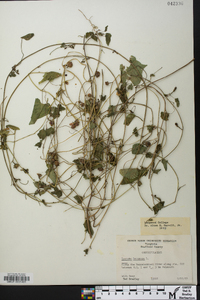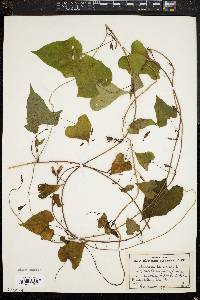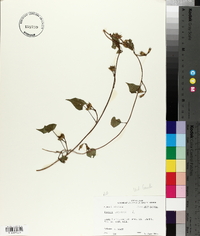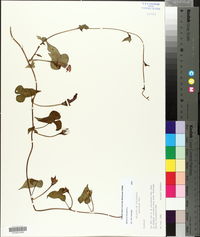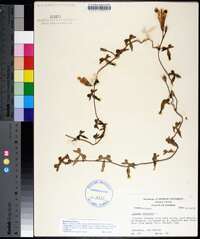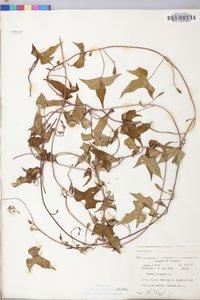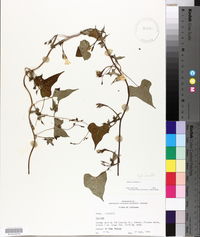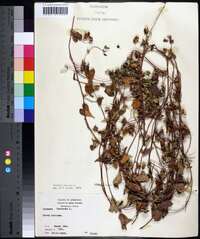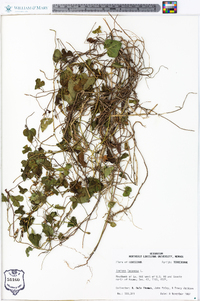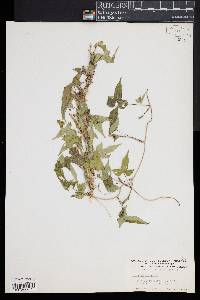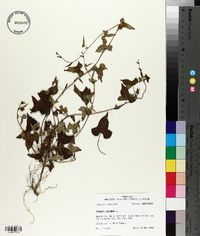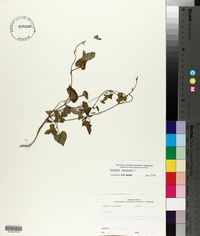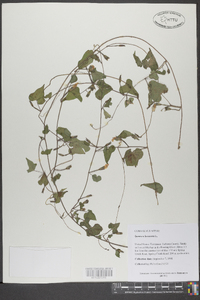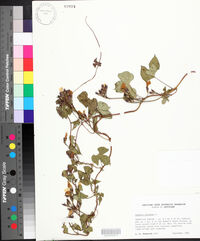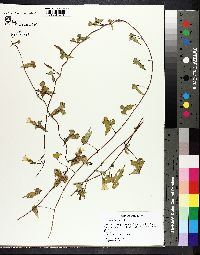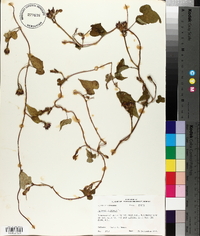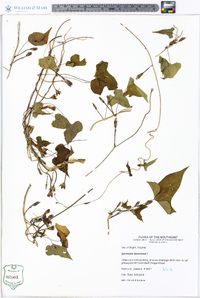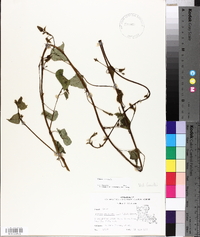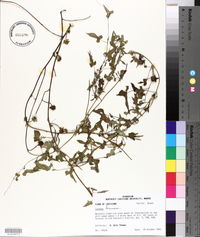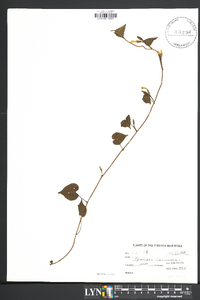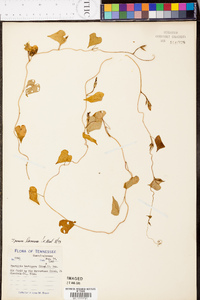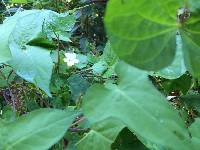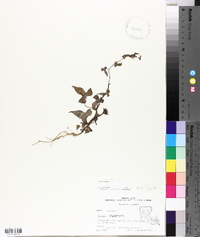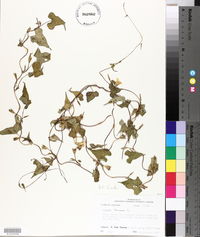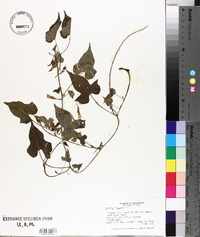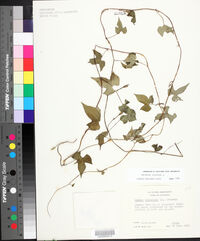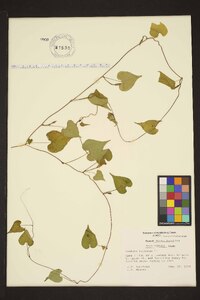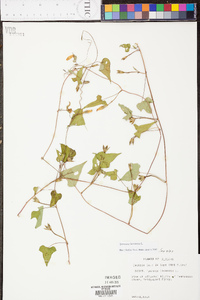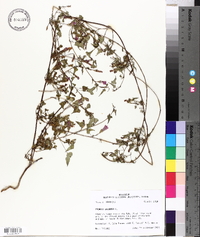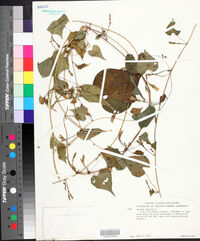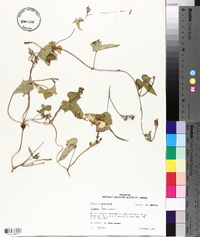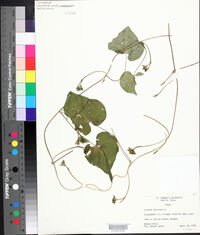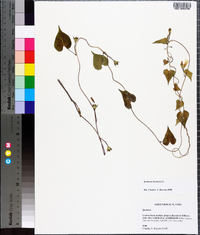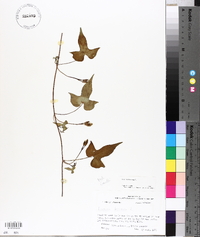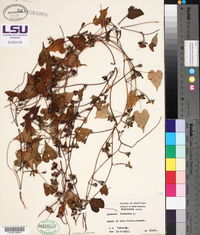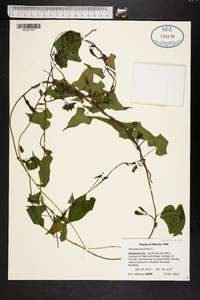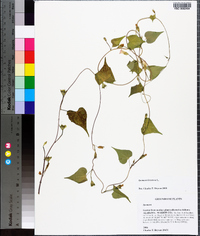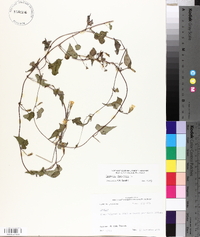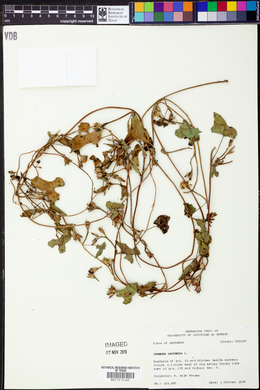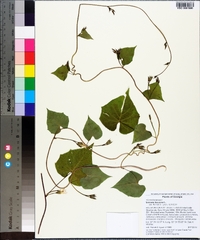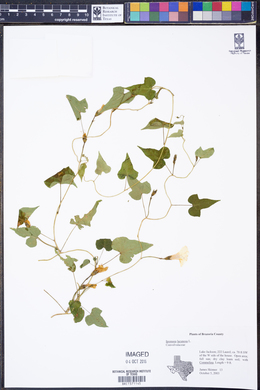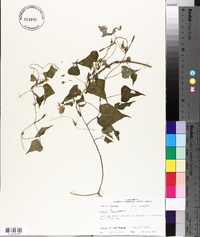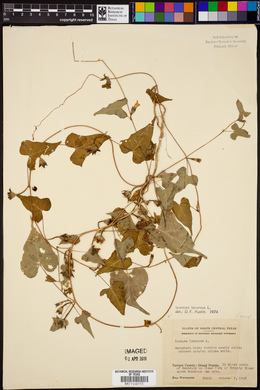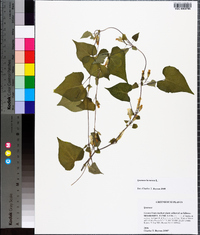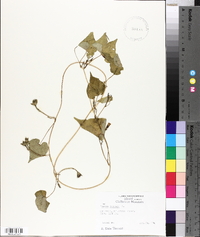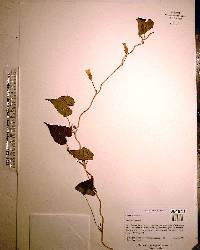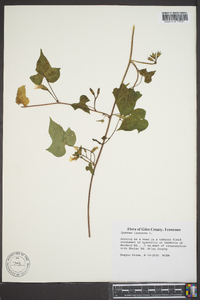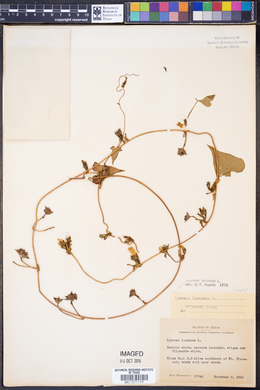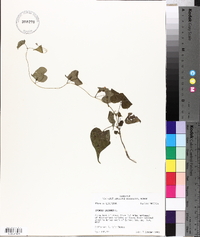
|
|
|
|
Family: Convolvulaceae
Whitestar
|
Annual vine 1 - 3 m long Stem: creeping or twining, slender, hairless or sparsely hairy, and if cut or broken then exuding a milky sap. Leaves: alternate, long-stalked, non-toothed, thin, hairless or sparsely hairy, 3 - 8 cm long, somewhat egg- or heart-shaped in outline with deeply cleft base, pointed tip, and sometimes three shallow lobes. Flowers: many, stalked, usually pure white, small, 1.5 - 2 cm long, 1 - 2 cm broad, radially symmetric, somewhat tubular or narrowly funnel-shaped with five short, flaring, pointed lobes. The flowers are arranged in umbel-like clusters of one to five flowers terminating a common stalk (shorter than leaf stalk) arising from the leaf axils. Sepals: five, 0.9 - 1.5 cm long, somewhat lance-shaped with long pointed tips, and with long bristle hairs along edges. Petals: five, but fused into a tube or funnel with flaring ends becoming shallow lobes with short wide pointed tips. Stamens: five, attached to inside base of petal tube, not extending beyond petal tube. Pistil: with one, two-chambered, superior ovary; a single style shorter than the petal tube; and one stigma with two small, rounded lobes. Fruit: stalked, two- to four-valved, two-chambered, rounded capsules with two seeds per chamber. The seeds are not hairy. Similar species: Ipomoea lacunosa is probably most similar to I. pandurata except that species has larger and broader flowers with colored throats, mostly hairless sepals, and a large tuberous root. Ipomoea coccinea, another introduced species that was reported to have been naturalized in the Chicago Region (see Swink and Wilhelm 1994), is fairly similar to I. lacunosa except that it has bright red flowers, sepals with long linear pointed bristle-tips, stamens and styles that extend beyond the petals, and a single rounded unlobed stigma. Other species of Ipomoea in our area have hairy sepals (at least at the base), usually blue or purple flowers, and three-lobed stigmas. Flowering: August to October Habitat and ecology: Introduced from farther south, rarely escaping and normally not persisting, but observed several times along railroads. Occurence in the Chicago region: non-native Etymology: Ipomoea comes from the Greek word meaning worm-like, possibly referring to the twining and twisting stems, or the twisted flower buds. Lacunosa refers to having holes, but it is uncertain to what this refers in this species. Author: The Field Museum Annual; stems 1-3 m, glabrous or sparsely hairy; lvs ovate, 3-8 cm, short-acuminate, deeply cordate at base, entire to angular or 3-lobed; peduncles mostly shorter than the subtending petioles, rarely longer, with 1-5 fls; sep lanceolate or lance-ovate, 10-15 mm, sharply or abruptly acuminate, hirsute-ciliate, the outer surface toward the base glabrous or sparsely villous; cor white, occasionally pink or pale purple, 1-2 cm; ovary bilocular; 2n=30. Moist fields and thickets, especially in alluvial soil; N.J. to O., Ill. and Kans., s. to Fla. and Tex. July-Sept. Gleason, Henry A. & Cronquist, Arthur J. 1991. Manual of vascular plants of northeastern United States and adjacent Canada. lxxv + 910 pp. ©The New York Botanical Garden. All rights reserved. Used by permission. From Flora of Indiana (1940) by Charles C. Deam Infrequent but common enough where it is found. Usually in cultivated fields and in the wild in moist or wet places along streams. The leaves vary from entire to angled or 3-lobed and the flowers from white to pink, mostly white in our area. …… Indiana Coefficient of Conservatism: C = 2 Wetland Indicator Status: FACW |

